25 Bold Signature Central European Savory Pies to Taste
Central European savory pies represent a delectable culinary tradition steeped in rich cultural heritage.
Generations of families have perfected these hearty recipes passed down through decades of careful preparation.
Regional ingredients and techniques transform simple dough into extraordinary culinary masterpieces that tantalize taste buds.
Hearty fillings reflect local agricultural traditions and seasonal produce available in each unique landscape.
Bakers craft these pies with remarkable skill, balancing intricate flavors and textures that speak to generations of gastronomic wisdom.
Robust and satisfying, these pies capture the essence of comfort food with their warm, inviting aromas and complex flavor profiles.
Culinary enthusiasts appreciate the deep connection between food, history, and cultural identity embedded in each carefully constructed slice: Here are 25 signature central European savory pies:
Signature Central European Savory Pies for Sharing
Central European pies are a symphony of flaky pastry and savory fillings, baked for family gatherings and festive occasions. These hearty slices are meant to be enjoyed together.
Poljicki Soparnik
Soparnik represents a rustic vegetable pie originating from Dalmatia's Poljica region, celebrated for its unique coal-baking method and minimalist ingredients.
Dalmatian bakers craft this traditional dish using simple flour, salt, and water dough filled with chard and red onions.
Bakers roll the dough into thin sheets, spreading the vegetable mixture between layers before carefully nestling the pie into hot coals.
During cooking, bakers pierce the dough to release steam and let it bake briefly under ash-covered embers.
Once removed from the coals, bakers sweep away the ash and generously brush the pie with olive oil and crushed garlic.
Regional cooks traditionally prepare soparnik as a hearty, economical meal reflecting Dalmatian culinary heritage.
Generations have passed down this unique preparation technique, preserving a simple yet flavorful peasant dish that embodies rural Croatian cooking traditions.
Viska Pogaca
Viska pogaca represents a rustic Croatian savory pie from Vis island, featuring a focaccia-like dough layered with olive oil, onions, and anchovies.
Mediterranean flavors define this traditional island specialty, combining simple ingredients into a hearty appetizer or light meal.
Bakers debate its ideal shape, with some preferring rectangular formats while others opt for round designs.
Local recipes passed through generations maintain its authentic preparation method using basic ingredients like flour, salt, yeast, and warm water.
Olive oil plays a critical role in developing the pie's rich flavor profile and soft texture.
Spices enhance the filling's complexity, creating depth beyond standard bread preparations.
Red wine serves as an ideal accompaniment, complementing the pie's robust Mediterranean character.
Croatian coastal cuisine shines through this unpretentious yet flavorful dish that connects generations of island residents.
Zwiebelkuchen
Zwiebelkuchen is a hearty German savory pie featuring a rich combination of caramelized onions, smoky bacon, and creamy egg custard nestled in a thin yeasted crust.
German regions traditionally prepare this rustic dish with seasonal ingredients from local farms, creating a comforting meal that captures autumn's essence.
Caraway seeds add an earthy depth to the pie's flavor profile, enhancing the sweetness of slow-cooked onions and salty bacon bits.
Farmers and home cooks have enjoyed this dish for generations, often pairing it with crisp white wine or beer during harvest celebrations.
Regional variations exist across Germany, though most versions maintain a similar core structure of a buttery, yeasted base filled with caramelized onion mixture.
Historical recipes sometimes used sour milk and simple bread dough, reflecting traditional German resourcefulness with kitchen staples.
Bavaria and southwestern German regions particularly embrace zwiebelkuchen as a beloved seasonal specialty.
Tarte Al D’Jote
Tarte al djote stands as a hearty Belgian savory pie rooted in Nivelles' culinary heritage, featuring a rustic blend of creamy cow's milk cheese and fresh chard nestled within a flaky pastry crust.
Medieval records trace this traditional dish back to the 13th century, highlighting its deep regional significance.
Belgian bakers craft the pie's delicate base using flour, butter, eggs, milk, yeast, and salt, carefully combining ingredients to create a rich, satisfying filling.
Onions, parsley, and pepper enhance the cheese and chard mixture, adding complex flavor dimensions.
Salted butter knobs generously sprinkled on top melt into the golden-brown surface, creating an irresistible finish.
Home cooks and restaurant chefs alike prepare this savory pie with meticulous attention to texture and taste.
Warm and comforting, tarte al djote serves as a beloved staple in Belgian cuisine.
Pirog Bigorajski
Pirog bigorajski represents a cherished Polish pie born in Bigoraj's culinary landscape, featuring a rustic blend of buckwheat, potatoes, cottage cheese, and sour cream.
Regional bakers craft this traditional dish with rich ingredients like mushrooms, fresh mint, and pork rinds, creating a hearty filling encased in either yeast or non-yeast dough.
Rectangular in shape, this specialty pie once graced festive tables during Christmas, Easter, christenings, and weddings.
Home cooks carefully season the mixture with salt and pepper, using lard for added depth.
Rectangular loaves emerge from ovens with golden-brown crusts, promising a taste of Polish heritage.
Decorated tops highlight its significance in community gatherings and special moments.
Each slice tells a story of tradition, comfort, and regional pride.
Komiska Pogaca
Komiska pogaca stands out as a mouthwatering Dalmatian square-cut pie bursting with Mediterranean flavors from Croatia's coastal regions.
Originating in Komiza, this savory pastry distinguishes itself from similar dishes through its rich tomato sauce base.
Local bakers craft the pie using a simple dough of flour, water, salt, oil, and yeast, carefully mixing in key ingredients like onions, anchovies, and fresh tomatoes.
Sea-inspired seasonings elevate the filling's depth and complexity.
Olive oil brushed across the surface adds a glossy finish and extra richness before serving.
Square-cut slices make this pie different from triangular versions found in neighboring regions.
Traditional preparation methods highlight the simplicity of Mediterranean cooking.
Rudarska Greblica
Greblica is a traditional miners' savory pie from Croatia featuring a rich cheese filling nestled between thin, crispy dough layers.
Originating in 16th-century Rude near Samobor, this hearty dish emerged alongside the growing mining industry.
Miners would enjoy greblica during long work shifts as a satisfying meal packed with protein and flavor.
Sour cream glazes the pie's exterior before baking, creating a golden-brown crust with a creamy finish.
Cheese serves as the primary filling, often enhanced with walnuts, green onions, or leeks for added texture and taste.
Bakers carefully wrap the ingredients within delicate pastry sheets, ensuring each slice contains a perfect balance of ingredients.
Named after the ash rake tool called greblica used in local mining communities, this pie reflects the region's culinary heritage.
Regional variations showcase subtle differences in preparation and ingredient selection, making greblica a beloved Croatian comfort food.
Rieslingspaschteit
Rieslingspaschteit is a luxurious Luxembourgish meat pie featuring a flaky pastry shell encasing a rich, wine-infused meat filling.
Wine-soaked pork or veal creates the pie's signature flavor, blended with chopped bread, herbs, and vegetables.
Bakers craft the delicate crust using flour, butter, lard, water, salt, and a splash of Riesling wine.
Skilled artisans create steam holes in the pie's top and brush it with beaten egg yolks for a golden, glossy finish.
Bakeries across Luxembourg produce this traditional dish, serving it chilled as a savory appetizer or light meal.
Riesling wine typically accompanies the pie, enhancing its complex flavor profile.
Regional ingredients and careful preparation make this pastry a beloved national specialty.
Luxembourg's culinary heritage shines through this elegant, flavorful meat pie.
Bribirski Prisnac
Bribirski prisnac are traditional Easter savory cakes originating from Bribir, Croatia, packed with regional flavors and rustic ingredients.
Local Croatian families craft these hearty pastries using a unique combination of skripavac cheese, eggs, flour, and yeast.
Bacon and ham provide rich meaty undertones that complement the soft cheese and springy dough.
Salt and pepper season the mixture before sautéed onions are folded into the batter.
Skilled home bakers transfer the seasoned ingredients into baking molds and carefully bake until golden brown.
Regional skripavac cheese gives the dish its distinctive squeaky texture and tangy taste.
Generations have prepared this specialty during Easter celebrations in Croatia's rural communities.
Warm slices emerge from ovens as a comforting reminder of local culinary traditions.
Ogulinska Masnica
Ogulinska masnica represents a cherished Croatian bread with deep regional roots, featuring a distinctive horseshoe-shaped pastry filled with sauteed onions, eggs, and lard.
Yeasted dough serves as the foundation for this hearty specialty from Ogulin.
Bakers carefully brush the bread with egg wash before baking it to a golden brown exterior.
Warm serving temperatures highlight its traditional preparation method.
Modern variations sometimes include cream or exclude onions from the classic filling.
Regional bakers take pride in maintaining the authentic recipe passed through generations.
Subtle flavor variations reflect the dish's adaptability while preserving its core culinary heritage.
Bread lovers appreciate its rustic simplicity and comforting texture.
Cholera
Cholera pie stands as a resourceful Swiss mountain dish born from scarcity during an 1836 epidemic, combining readily available ingredients like potatoes, onions, leeks, bacon, cheese, and fruits within a flaky pastry crust.
Mountain residents crafted this hearty pie by layering whatever ingredients they possessed during challenging times.
Swiss farmers from Valais developed this innovative meal as a practical solution to hunger and limited resources.
Baked until golden and crisp, the pie transformed random ingredients into a satisfying meal.
Traditional preparation involves carefully arranging ingredients in layers before encasing them in a buttery pastry shell.
Regional variations might include different vegetable combinations or additional local meats.
Alpine communities continue making this historic dish as a reminder of culinary resilience.
Each slice tells a story of survival and creativity from Switzerland's mountainous regions.
Weimarer Zwiebelkuchen
Weimarer Zweibelkuchen marks Germany's beloved autumn culinary tradition with a savory onion tart featuring a golden yeast dough base generously topped with caramelized onions.
Regional bakers carefully craft this rustic specialty by slowly sautéing sweet onions until they turn soft and translucent.
Sour cream and eggs create a rich, silky custard that binds the tart's ingredients together.
Baked until golden brown, the tart offers a perfect balance of crispy crust and creamy filling.
German families often enjoy this dish during harvest festivals and seasonal gatherings.
Typical ingredients include wheat flour, fresh eggs, cream, and locally grown onions.
Bavaria and Thuringia regions particularly celebrate this hearty autumn dish.
Served warm with a light salad, Weimarer Zweibelkuchen makes an excellent lunch or dinner option.
Churer Fleischtorte
Churer Fleischtorte represents a hearty Swiss meat pie from Graubünden that combines rustic Alpine ingredients into a savory culinary masterpiece.
Mountain dwellers crafted this robust dish using local meats like Bundner salsiz salami and ground pork or beef mixed with onions and leftover bread.
Bakers prepare a simple flour-based dough with butter and cold water as the foundation for the rich filling.
Red wine adds depth to the meat mixture, creating complex flavor profiles characteristic of regional cuisine.
Traditional preparation involves layering the seasoned meat filling inside a carefully rolled pastry crust.
Families in Chur have passed down this recipe through generations, preserving their cultural cooking traditions.
Regional ingredients and simple techniques define the essence of this traditional Swiss specialty.
Generations continue to enjoy this filling meal that reflects Graubünden's agricultural heritage.
Pate Gaumais
Pate gaumais exemplifies Belgian regional culinary tradition through its rich pork-filled yeast pastry originating in Gaume, Luxembourg province.
Belgian bakers and butchers craft this distinctive pie using prime pork cuts carefully marinated for two days in wine or vinegar with aromatic spices.
Garlic, shallots, bay leaves, thyme, and parsley infuse deep flavor into tender meat before being encased in soft, golden dough.
Regional techniques transform simple ingredients into a memorable gastronomic experience that reflects local agricultural practices.
Generations have preserved this recipe, passing down preparation methods from one family to another.
Each pie represents a connection to Belgian countryside cooking traditions.
Meat marinades ensure intense taste and tender texture throughout the pastry.
Seasonal preparation allows communities to celebrate their distinctive culinary heritage through this signature dish.
Bolletunne
Bolletunne is a hearty Swiss savory pie from Schaffhausen featuring a rich blend of onions, bacon, and eggs nestled in a buttery, crisp pastry crust.
Regional bakers craft this traditional dish with a simple dough made from flour, butter, salt, and cold water.
Bacon and onions create a robust flavor base that gets enhanced by a creamy egg mixture seasoned with nutmeg and black pepper.
Bakers carefully sprinkle breadcrumbs on the bottom crust to prevent sogginess and ensure a perfectly crisp texture.
Swiss families often serve this pie as a comforting main course during cool autumn and winter months.
Regional variations exist, but most recipes follow a similar preparation method.
Schaffhausen locals consider this pie a staple of their culinary heritage.
Home cooks pass down the recipe through generations, maintaining its authentic taste and technique.
Pera
Pera represents a traditional Croatian savory pie crafted with a thin leavened dough base filled with fresh cow's cheese, sour cream, and eggs.
Regional bakers from Vrbovec originally developed this rustic dish as a versatile open-faced meal highlighting local dairy ingredients.
Wood-fired ovens once gave the pie a distinctive slightly charred crust that enhanced its rustic flavor profile.
Croatian families typically roll pera into an oval shape before baking and slice it into triangular wedges similar to pizza.
Cornmeal occasionally adds extra texture to the cheese mixture.
Wood-fired preparation methods contributed to its unique regional character.
Rural communities embraced this simple yet satisfying recipe as a staple meal.
Generations have preserved this authentic Croatian culinary tradition through careful preparation techniques.
Povitnek
Povitnek is a traditional Slovenian rolled pastry showcasing Koroska region's culinary heritage with its versatile wheat flour dough stretched thin and filled with cottage cheese.
Cooks carefully spread cottage cheese, eggs, and sour cream across the delicate dough before rolling and cutting it into segments.
Povitnek transforms from savory to sweet with simple ingredient adjustments like adding pork cracklings or breadcrumbs fried in butter.
Slovenian families prepare this dish by wrapping the rolled pieces in cloth and cooking them carefully.
Salt and sugar modify the flavor profile depending on whether you want a main course or dessert.
Regional techniques passed through generations ensure the perfect texture and taste.
Thin dough and creamy filling create a unique culinary experience that reflects Slovenian cooking traditions.
Povitnek represents more than food—it embodies cultural connection and familial warmth.
Pofalaca
Pofalaca represents a rustic Slovenian bread-like pastry handcrafted in rural regions near Ljubljana with careful preparation involving wheat flour, yeast, eggs, milk, butter, salt, and sugar.
Bakers carefully knead soft dough into circular shapes after allowing initial resting periods.
Bread makers traditionally stretch and shape the delicate mixture by hand with practiced movements.
Regional families typically prepare pofalaca during festive gatherings or special weekend meals.
Local households often serve this golden-brown pastry warm with simple butter spreads.
Sweet variations occasionally include fruit preserves or honey as complementary toppings.
Slovenian countryside communities consider pofalaca a meaningful culinary connection to agricultural traditions.
Rural baking techniques ensure each pofalaca maintains its authentic handmade texture and flavor profile.
Zufenjaki
Zufenjaki are hearty corn-based pies from Croatia's Meimurje region that showcase indigenous culinary traditions through their simple yet flavorful preparation.
Regional farmers originally crafted these rustic pastries using locally grown corn flour and pumpkin seeds as primary ingredients.
Traditional recipes blend corn flour with butter, sugar, salt, and water or milk to create a unique savory-sweet base.
Zufa (pumpkin seeds) provide a distinctive nutty crunch that elevates the pie's texture and taste.
Home cooks typically prepare zufenjaki as a versatile side dish or light meal that reflects agricultural practices in northeastern Croatia.
Generations have passed down this recipe through family kitchens, maintaining its authentic regional character.
Modest ingredients and straightforward cooking methods define these unassuming corn pies.
Meimurje's agricultural heritage continues to preserve this humble yet satisfying regional specialty.
Vidovecki Hajdini Gibanek
Vidovecki hajdini gibanek is a rustic Croatian pie blending diverse local ingredients into a multilayered culinary marvel.
Regional bakers craft this traditional dish with unique combinations of white and buckwheat flour, creating a distinctive pastry base.
Grated pumpkin provides a sweet, earthy core to the filling, complemented by cottage cheese and eggs.
Bread rolls soaked in milk add texture and depth to the mixture.
Semolina and sour cream enhance the pie's creamy consistency.
Cooks prepare the dough carefully, rolling and lining a circular earthenware pot with alternating layers of pastry and filling.
Sugar balances the savory elements, creating a complex flavor profile.
Rural households in Vidovec have perfected this recipe through generations, preserving a slice of Croatian gastronomic heritage.
Kucanski Koscicjak
Kucanski koscicjak represents a hearty Croatian countryside staple crafted from buckwheat and pumpkin ingredients native to Varazdin region.
Local villagers from Kucan and Zbelava developed this unique layered gibanica-style bread featuring complex textures and regional flavors.
Bakers carefully blend buckwheat and plain flour with warm milk, oil, and salt to create its distinctive base.
Ground pumpkin seeds and fried onions form the savory interior stuffing that distinguishes this rustic dish.
Traditional preparation involves hand-layering ingredients instead of rolling the dough like standard pastries.
Varazdin pumpkin oil adds rich depth to the overall flavor profile.
Regional farmers originally created this recipe using accessible local ingredients.
Generations have maintained this authentic culinary technique that celebrates Northwestern Croatian agricultural traditions.
Belokranjska Povitica
Belokranjska povitica is a traditional Slovenian pastry crafted by Serbian and Croatian Habsburg soldiers in Bela Krajina, featuring delicate phyllo dough wrapped around a rich, creamy filling.
Serbian and Croatian Uskoks soldiers introduced this savory treat to Slovenia during their migration to eastern Adriatic regions.
Rural bakers carefully prepare pregreta smetana, a unique milk product created by heating and baking full-fat milk until a golden-brown crust forms.
After draining the cream, they blend the remaining cheese with fresh eggs and spread the mixture across thin phyllo sheets.
Skilled hands meticulously roll the pastry, creating layers of smooth, tangy filling within crisp, flaky dough.
Regional bakers take pride in maintaining this historic recipe, passed down through generations of Slovenian families.
Mountain herbs and fresh dairy often enhance the filling's complexity, adding depth to each bite.
Benkovacki Prisnac
Benkovacki prisnac represents a rustic Croatian bread-like pie originating from Benkovac with a distinctive round shape created by traditional ember-baked preparation.
Local bakers craft this savory dish using simple ingredients like flour, eggs, sour cream, salt, oil, and fresh cheese.
Croatian families have prepared prisnac for generations using a unique peka cooking method involving hot embers covering a baking lid.
Regional recipes slightly vary but maintain core techniques passed through generations.
Home cooks carefully mix ingredients to create a soft, golden-brown pastry with rich cheese flavors.
Mountain communities especially treasure this hearty dish as a comforting meal.
Rural kitchens often serve prisnac warm as a standalone lunch or side dish.
Croatia's western regions consider this pie a beloved regional specialty showcasing traditional cooking methods.
Licka Pogaca Sa Sirom
Pogaca represents a traditional Croatian bread-like pie originating from Lika, crafted with simple ingredients like flour, grated cheese, baking powder, sour milk, eggs, salt, and oil.
Rural families developed this hearty dish as a staple comfort food with a crispy golden exterior.
Croatian households spread the mixture into a large baking tray, creating a rustic bread that serves as a versatile side dish or standalone meal.
Home cooks typically bake pogaca until its surface turns a rich golden brown, ensuring a crisp texture and warm interior.
Regional variations exist across Croatia, with some families adding unique spices or additional ingredients.
Salt and cheese provide the primary flavor profile, making pogaca a satisfying and straightforward bread.
Rural communities have prepared this dish for generations, passing recipes through family lines.
Baking pogaca connects Croatian families to their agricultural heritage and traditional cooking methods.
Masnica
Masnica is a traditional Croatian pie originating from Lika region, featuring a simple flour-based dough filled with fresh cow's cheese, sour cream, and eggs.
Regional bakers craft two distinct variations: kisela masnica with a touch of yeast and maslenica without yeast.
Mountain shepherds and rural families developed this rustic dish as a practical, protein-rich meal.
Ingredients blend together easily with basic pantry staples like flour, water, salt, and sugar.
Soft, flaky pastry wraps around creamy cheese filling that melts in you mouth.
Rural kitchens perfected this recipe over generations, using fresh ingredients from local farms.
Masnica serves as a hearty breakfast or satisfying lunch option for families.
Regional cooks often prepare this pie during harvest and seasonal gatherings.
How Are Central European Savory Pies Traditionally Prepared or Baked?
Central European savory pies are beloved comfort foods with rich fillings and hearty crusts, crafted through time-honored preparation and baking methods:
Central European savory pies embody rustic charm and robust flavors, reflecting the region’s culinary heritage and seasonal ingredients.

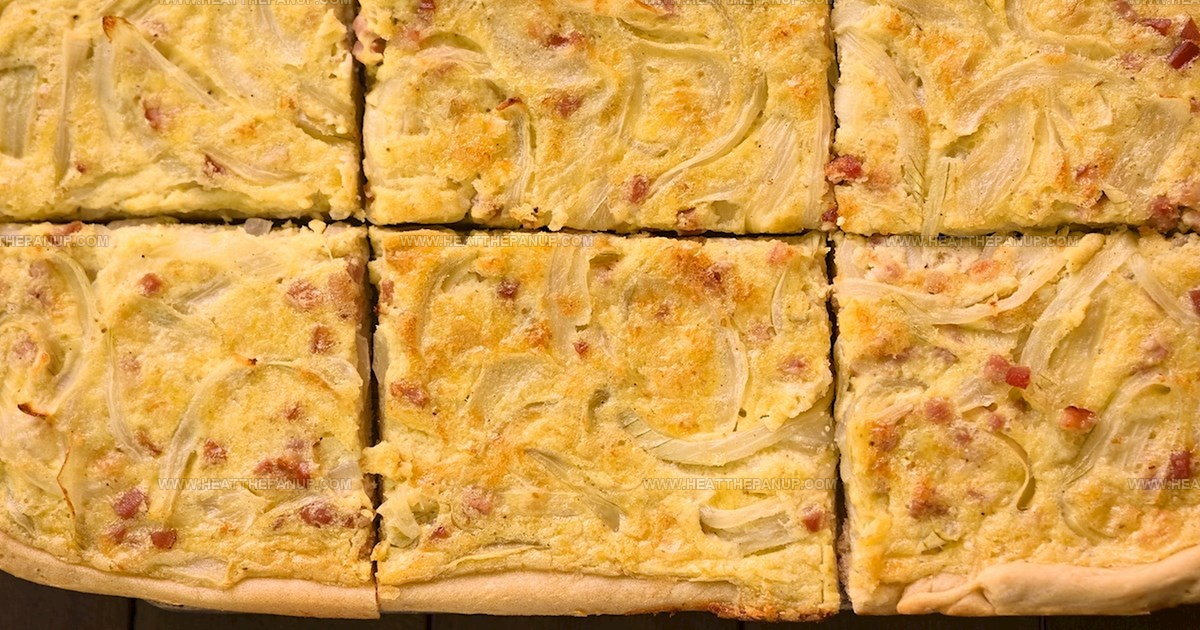
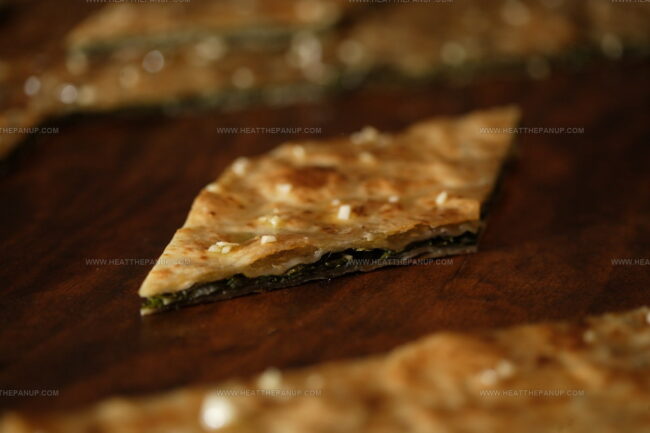
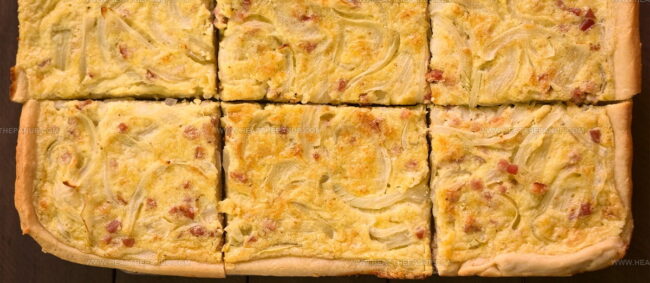
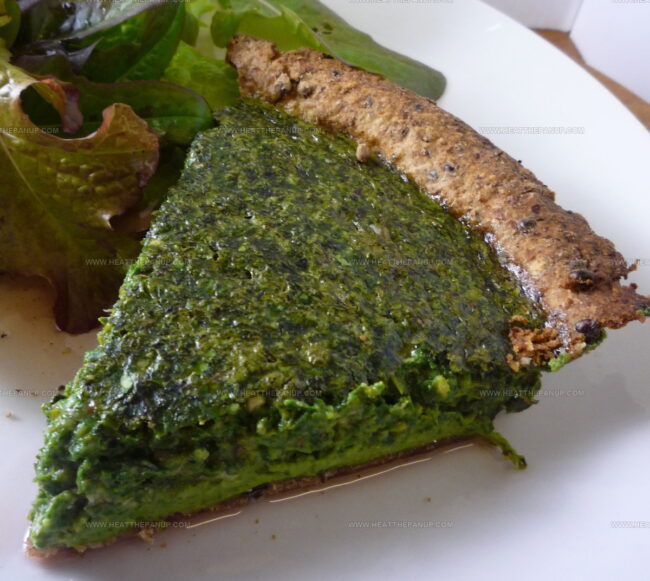
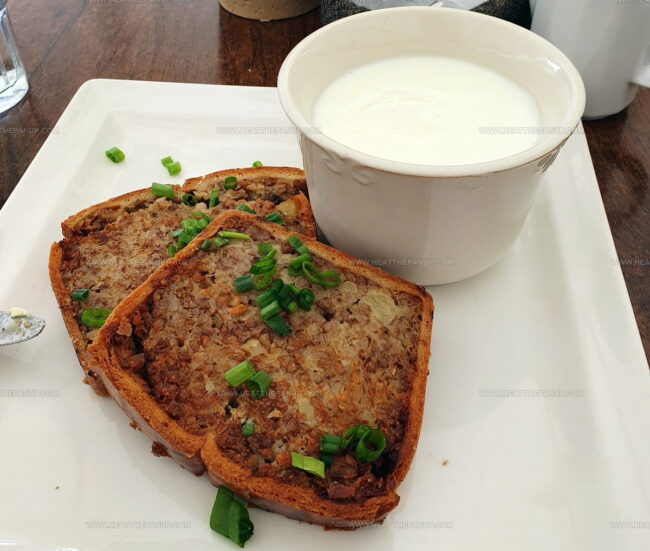
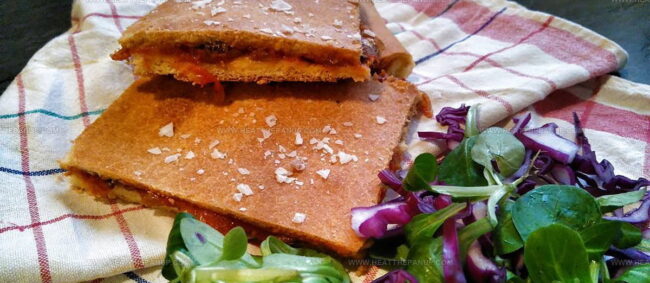
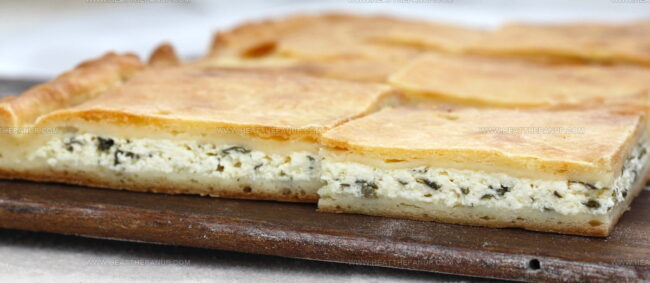

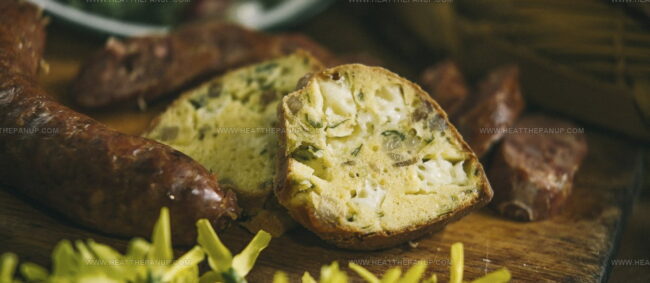
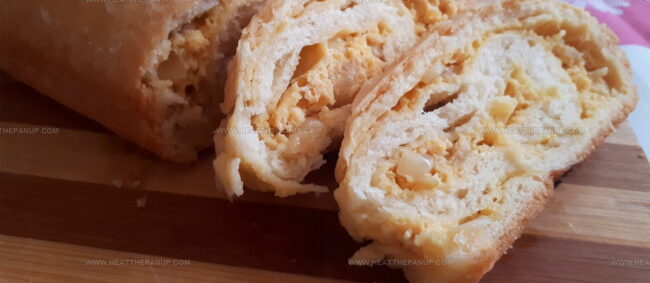
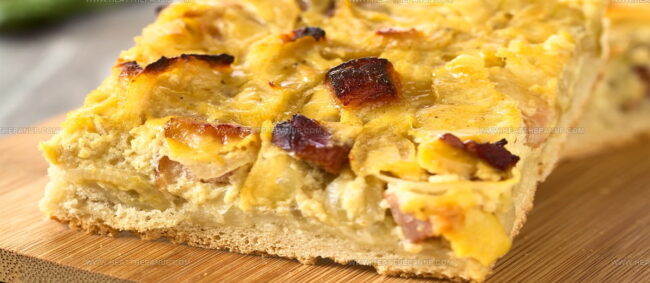
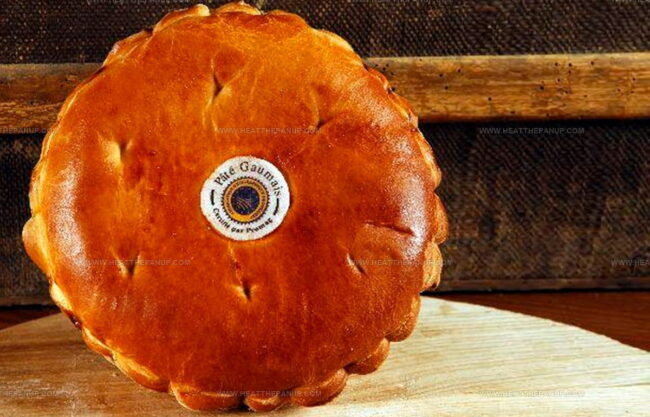
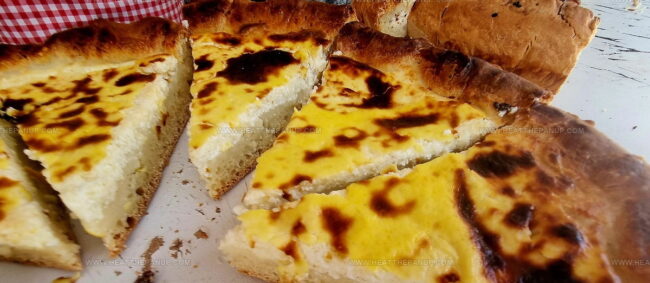
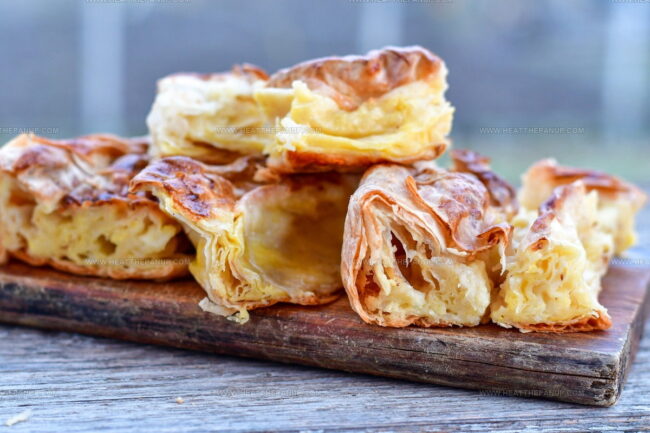
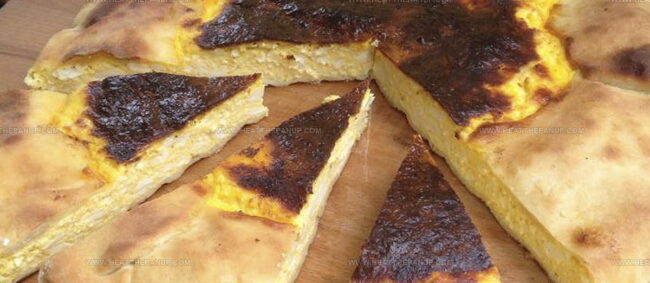
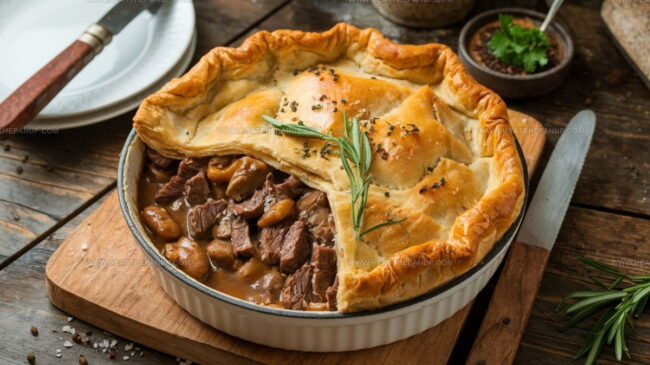
Angelina Wiles
Content Editor & Culinary Enthusiast
Expertise
Food Writing and Editing, Vegetarian and Vegan Cuisine, Baking and Pastry Arts, Sustainable Cooking Practices
Education
Portland Community College
Certificate in Culinary Arts
Focus: Emphasis on sustainable cooking practices, vegetarian cuisine, and food writing.
Oregon Culinary Institute
Diploma in Baking and Pastry Arts
Focus: Specialized training in artisanal baking, pastry techniques, and dessert presentation.
Angelina’s love for cooking started with handwritten family recipes and weekend trips to farmers’ markets around Portland. She followed her passion with a Certificate in Culinary Arts from Portland Community College, then perfected her sweet side with a Diploma in Baking and Pastry Arts at Oregon Culinary Institute.
Angelina believes recipes should feel like a conversation, not a science project. She’s all about helping readers trust themselves in the kitchen with simple steps, fresh ideas, and easy twists on classic meals.
When she’s not editing recipes, she’s baking bread, sipping coffee, or getting inspired by the changing seasons.